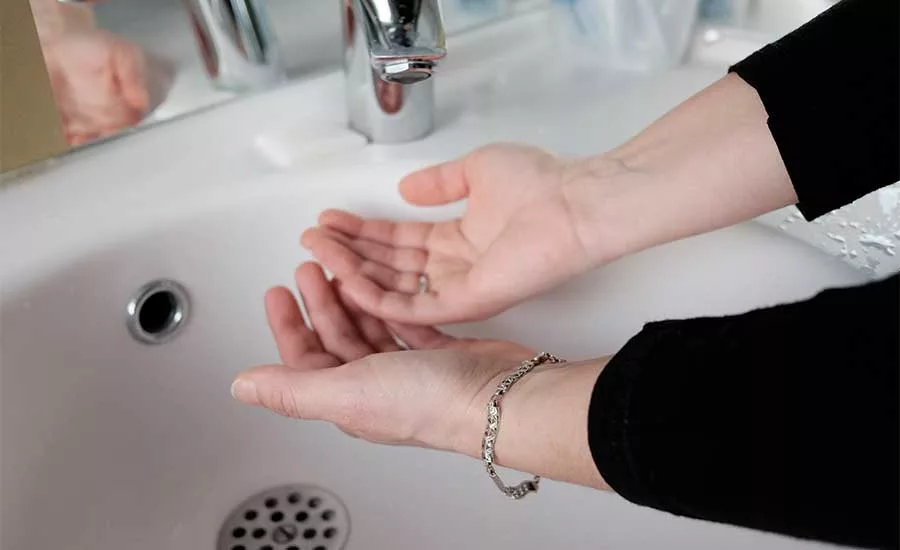Pump Failure a Sign of Bigger Water Well System Issues


When the taps run slow or not at all, it’s up to water system professionals to troubleshoot the problem for customers.
Residential water well problems can be attributed to many causes, from equipment failure to depletion of the aquifer to improper well design and construction. Whether faced with a depleted aquifer due to drought or an improperly sized pump, water well contractors spend much of their time responding to and troubleshooting water well issues.
Most problems with water well systems can be divided into three categories: well, electrical or mechanical. Industry experts attribute about 70 percent of water well system problems to electrical issues involving the motor, wires or control systems.
Here are some common challenges that can affect well pump and motor performance, and actions water well contractors can take to avoid future problems.
Electrical Issues
A submersible pump cable without a watertight splice can result in a possible short, arcing or an electrical shock hazard. Likewise, improper wire sizing may result in voltage drop, a condition where a portion of the supply voltage is lost within the cable itself due to high resistance, which can lead to premature motor failure. It’s important to check the wire being used to make sure it is in accordance with the manufacturer’s recommended wire sizing chart.
Water pumps vary in terms of how much power they need, depending on the head and flow conditions required to meet the application. Ensuring a system operates within the minimum and maximum flow rate as close to the best efficiency point will provide the longest product life.
With regard to incoming power supply, most motors are rated to handle +/- 10 percent of the nominal voltage. In some cases, such as with the use of a variable frequency drive (VFD), up to 15 percent voltage variation is acceptable. However, if the voltage is outside of the product’s recommended range, you risk excessive heating of the motor windings, which can result in nuisance tripping and will greatly reduce the life of the motor. High voltage also often leads to higher motor speed, which will result in higher pump loading and over-current situations, whereas low-voltage conditions may result in a no-start situation. Proper training and use of a meter for troubleshooting are beneficial, as is an understanding of key properties such as frequency, resistance and capacitance.
While pump motors and pump controllers might be able to handle a moderate electrical surge, high-energy power surges like lightning strikes can cause severe damage and are nearly impossible to protect against. Many single-phase submersible motors and VFDs today are equipped with built-in surge protection, but it is critical to follow proper electrical practices per local code to assure grounding and proper installation of all circuit breakers/fuses. In areas prone to surge conditions due primarily to inclement weather, it’s also a good idea to contact the manufacturer for additional protection devices they may provide or recommend. Please note the use of ground fault interrupters may not be possible with some VFDs due to potentially high-leakage currents to the ground from the motor, drive and drop cable.
Mechanical Problems
Abrasives like sand and sediment can wreak havoc on hydraulic components and system bearings, resulting in mechanical issues that can reduce water well performance. To combat the wearing effects of abrasive materials, pump manufacturers are creating submersible pumps with a floating impeller stack design, which features rotating components that do not come into contact with each other and allows sand and other harsh materials to pass through easily. This results in extended life and sustained performance over time.
Pump manufacturers like Xylem are also increasingly designing well components made from more durable materials, including bearings made from engineered polymers, which are more resistant to damage from sand, abrasives and running dry.
Another common mechanical issue is malfunctioning pressure switches. When homeowners notice low or inconsistent water pressure, the solution often involves adjusting or replacing the pressure switch, as well as ensuring there is no blockage in the pressure line to the switch. The switch signals the well pump to start or stop pumping, depending on the pressure in the water system.
Water pressure problems can also mean a bad check valve. When the check valve is stuck open, the pump can spin backward causing additional wear and significant stress on the pump and motor if it was energized. The empty pipe and zero-pressure differential between the suction and discharge can lead to an upthrust condition on startup, causing potent damage. When the check valve is stuck in the closed position, the pump will deadhead, adding significant energy to the water inside the pump. The result is excessive heat and no cooling flow for the motor, which can cause damage to the motor, pump and well casing.
Other Well System Challenges
Water well system problems may have nothing to do with a defective or broken well component. Instead, they can be attributed to improper system sizing or poor well conditions, such as a low-yielding well, a blocked screen or harsh water condition.
When an incorrectly sized pump is used, the water well system may not provide enough water to keep up with demand. At the same time, in order to avoid an over-pumping condition, it’s important to never install a pump that has a greater capacity than the well. A good starting point for pump selection is to refer to a normal seven-minute peak demand period method using either a total fixture count or the number of bathrooms in the home. In situations where the demand exceeds the well capacity, additional storage would be required in the form of a larger pressure tank and/or the addition of a flow limiting device to manage the flow to the well capacity. In cases where the yield is extremely low, an atmospheric storage tank can be used with a second pump for repressurization.
It’s also essential for residential water well systems to have a correctly sized pressure tank. An improperly sized tank can cause the pump to short cycle — turning on and off too frequently, increasing energy use and causing premature pump failure as excessive heat builds up. The heat is generated by high current flow at the motor starting and requires that water flow past the motor to ensure proper cooling. Ideally, the pressure tank should be sized large enough so the pump has a minimum run time of one minute — preferably two minutes — each time it starts.
Contractors also should be aware of how changes in household demand can impact an existing water well system. Homeowners may not take into account whether their existing water well pump can handle the increased water use that might result from a kitchen remodel or bathroom addition.
Recognizing the symptoms of common water well problems can ultimately help contractors identify their causes and select the appropriate course of action before significant damage to the water well pump and motor occurs.
Looking for a reprint of this article?
From high-res PDFs to custom plaques, order your copy today!




